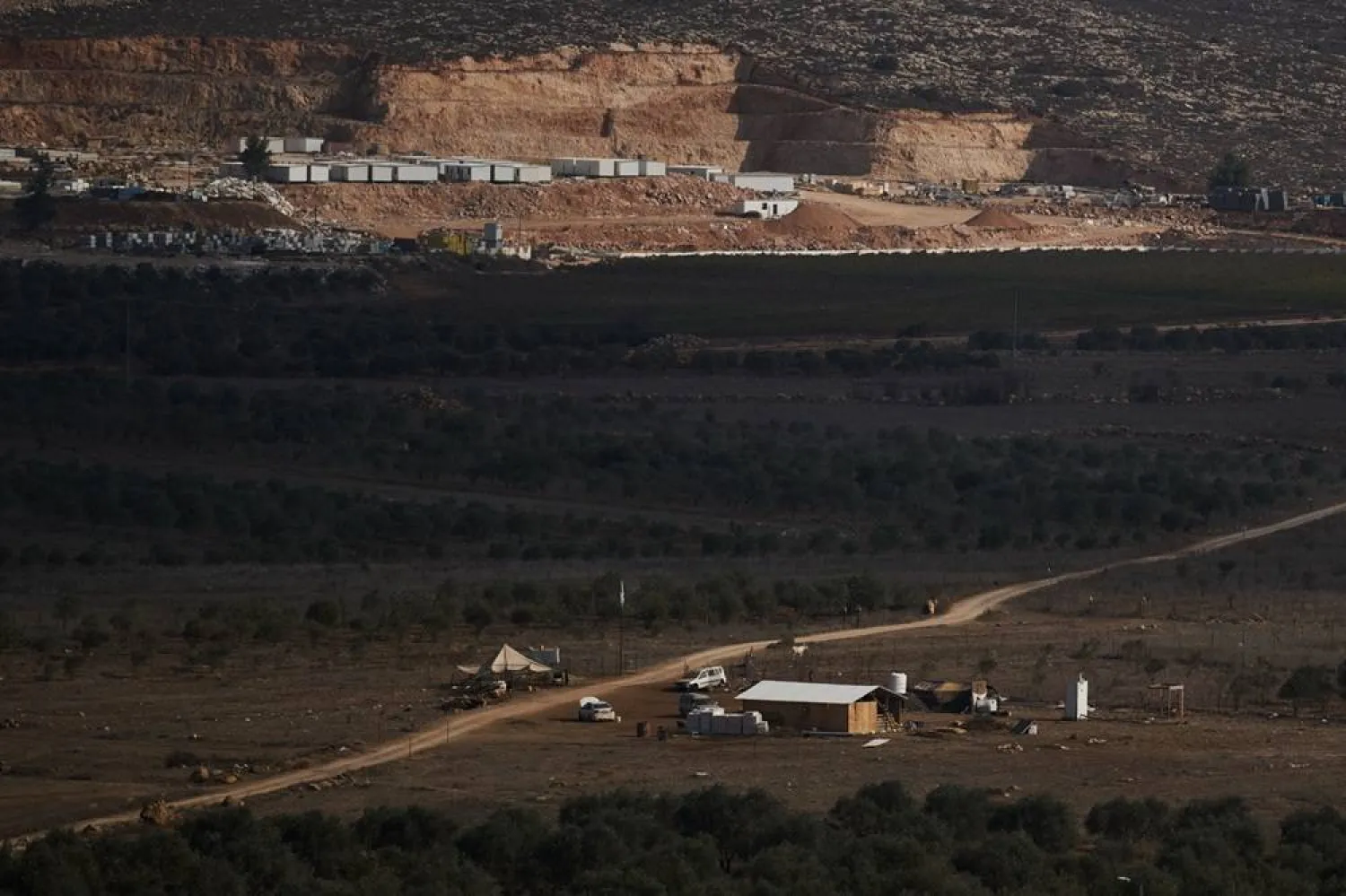Over the past two months, Iraqis have been living, working and breathing in thick clouds of dust, as at least nine sandstorms - lasting up to several days each - have hit the country, blanketing everything in grit.
Hospitals have reported a surge in admissions, with thousands of patients coming in with severe respiratory illnesses, while schools and offices have had to close and flights have been grounded for days at a time.
"I can't walk outside without coughing or covering my mouth," Azzam Alwash, founder of non-governmental green group Nature Iraq, told the Thomson Reuters Foundation from his home in Baghdad.
The latest storm "kept me in the house for two days. I have asthma, so I have to stay inside to protect my lungs," he said.
Iraq, Iran, Syria and other Gulf states are no strangers to sand and dust storms (SDSs) which have historically occurred in the hot months from May to July when strong northwesterly winds carry large amounts of dust throughout parts of the region.
But these days the storms are coming earlier and more frequently, rising well above the once-normal once or twice a year, starting as early as March and spreading over a wider area.
As governments struggle to cope with the dusty onslaught, environmentalists and government officials say what's driving the threat is a combination of climate change and poor water management practices that together are turning more of the region's soil into sand.
They warn that rising temperatures and changing weather patterns suggest there's worse to come, unless governments can work together to cut climate-changing emissions and reduce the health and financial impacts of the waves of sand sweeping through the region.
"The increase in droughts is a particular concern," said Kaveh Zahedi, deputy executive secretary for sustainable development at the United Nations' Economic and Social Commission for Asia and the Pacific.
He said affected countries should invest in early warning and forecasting systems, craft more efficient water and land management policies, and put in place insurance and social protection measures to help the most vulnerable communities recover from the storms.
A perfect storm
Travelling thousands of kilometers, each sand and dust storm can wreak havoc through a dozen countries.
They damage buildings, powerlines and other vital infrastructure, kill crops, reduce visibility for drivers and interrupt air, rail and water transportation, according to a 2019 report from the World Bank.
The Middle East and North Africa (MENA) loses about $13 billion a year to the effects of sandstorms, from the costs of cleanup and recovery to treating health problems and a decline in productivity, the report says.
Kaveh Madani, a research scientist focused on environmental justice, security and diplomacy at City College of New York, said the dangers posed by sand and dust storms have been overlooked by local and international governments for too long.
"This transboundary and transgenerational issue ... is only becoming more dangerous every year," said Madani, who previously served as deputy head of Iran's environment department.
"It's really disappointing to see that one of the most debilitating environmental problems of the 21st century is not being properly recognized by major intergovernmental and scientific agencies," he said in a telephone interview.
The Middle East has always been naturally burdened with strong winds, dry soil and hot weather, which combined provide the perfect conditions for sand and dust storms.
But climate experts say rising heat coupled with decades of poor water management and inefficient agricultural practices have degraded land across the region, making it easier for dust particles to be picked up and swept across vast areas.
A report released by the International Monetary Fund in March shows that, since the 1990s, the Middle East has been heating up twice as fast as the global average.
In many MENA countries, 85% of water goes to agricultural uses, according to the World Bank.
Climate experts say unsustainable agricultural practices such as overgrazing, excessive use of chemicals and machinery and excessive irrigation - often encouraged by heavily subsidized water tariffs - are helping drive desertification in the region.
Also to blame, said Madani, are the strings of dams being built on some of the region's major rivers, which can block water flowing to wetlands. Conflicts also can force farmers to flee, leaving their land to become barren and dry.
"Add to this mix the problem of deforestation, land use changes, abandoned farmlands ... and you have the recipe for more frequent and intense dust storms," he said.
Dust diplomacy
Tense political relations between some of the countries hardest hit by sandstorms hamper negotiations on how to tackle the problem, said Erik Solheim, who was executive director of the UN's Environment Program between 2016 and 2018.
But some nations have made individual efforts to fight dust storms in the region.
Saudi Arabia has committed to planting 10 billion trees within its own borders with the aim of reducing carbon emissions and reversing creeping land degradation.
Trees can revive parched land by trapping more rain in the ground and slowing the evaporation of water from the land, while their roots bind soil and prevent erosion.
In 2016, the Abu Dhabi-based Masdar Institute of Science and Technology launched a web-based modelling system that provides near-real-time maps of concentrations of atmospheric dust and other pollutants in the region.
But environmental experts who spoke with the Thomson Reuters Foundation said existing measures are not enough to prepare the region for the extreme dust storms that worsening climate change could bring.
"Unless immediate and serious action is taken in the Middle East to address the matter of dust storms, outcomes like forced migration of people can turn (storms) into a global problem rather than a regional one," Madani said.
Solheim, currently a senior advisor to the World Resources Institute think tank, is among several experts and officials calling for UN climate talks this year in Egypt and next year in the United Arab Emirates to become a forum for governments to engage in diplomacy aimed at curbing the scourge of sandstorms.
"Many other environmental issues are higher on the agenda, but sand and dust storms have hardly been talked about in climate talks," Solheim said.
"(The problem) has been seen as a secondary issue, even though it is one of the most harmful environmental issues for human beings."










